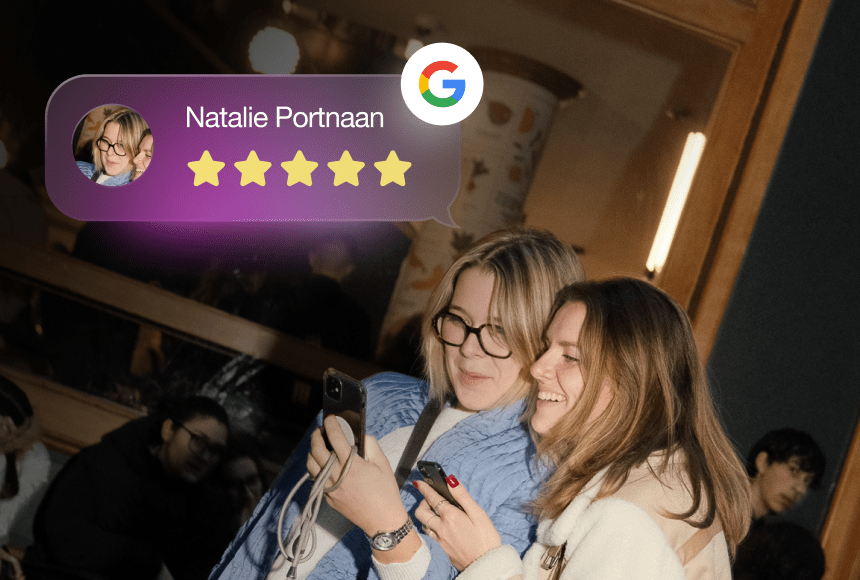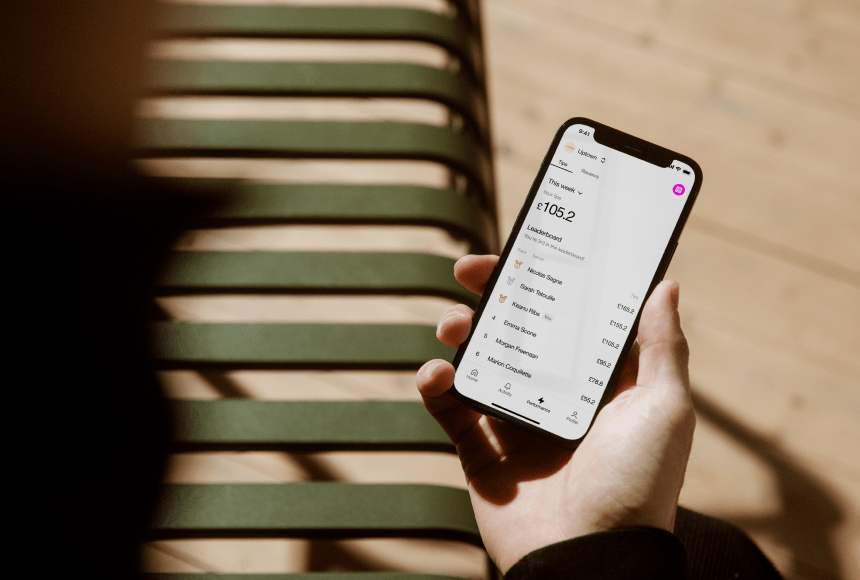
How Online Reputation Shapes Restaurant Footfall in the UK
Bringing a new dish to the menu always stirs both excitement and a slight tinge of risk. Will guests fall in love with its flavors, or will it get overshadowed by established bestsellers? This question of public acceptance extends beyond the plate when it comes to a restaurant’s online presence. In the digital age, online reputation often has a surprisingly powerful influence on footfall—your diner count can surge when the internet is singing praises or drop sharply with negative publicity. But how exactly does a few lines of text on Google, Facebook, or TripAdvisor translate into more (or fewer) seats filled each night?
This article takes a detailed look at the many facets of online reputation and why it matters so much for restaurants across the UK. By exploring insights, research data, and proven strategies, it aims to offer practical tips on how to build and maintain a glowing reputation that steadily increases foot traffic. From the subtle differences between review platforms to the role of QR code payment systems in nudging positive feedback, everything ties back to that core goal: keeping your dining room bustling with satisfied guests.
Why Online Reputation Affects Footfall
Trust as the Critical Ingredient
A restaurant’s reputation is more than just star ratings on a website. At its heart lies something intangible but vital: trust. Diners must trust that the experience will be worth their time and money. This trust does not simply form overnight; it is cultivated through consistent quality, warm service, and the chorus of genuine guest testimonials.
- Social Proof: People instinctively look to others’ experiences to validate their dining choices. A 2022 study by ReviewTrackers found that 94% of consumers say an online review has convinced them to avoid a business. Even a handful of negative comments can significantly dampen enthusiasm, particularly if they remain unresolved.
- Digital Word of Mouth: Positive chatter, whether through Yelp, Google Reviews, or social media, can drive a surge in bookings. Think of each positive review as a friend enthusiastically recommending your restaurant to their close circle—except, in the online space, that circle can be thousands of people.
Visibility and Search Engine Priorities
While the human element of trust is crucial, technology plays an equally significant role. Search engines like Google reward highly reviewed, frequently updated business pages with better visibility. Appearing among the top local search results isn’t just a technical victory; it’s a direct funnel toward diners looking for “best pasta in Manchester” or “authentic curry in Birmingham.”
- Local SEO Boost: Restaurants with strong average ratings and consistent reviews often appear in Google’s coveted Local Pack (the box displaying local businesses on Google Search). This prime real estate can massively impact foot traffic, turning casual browsers into potential customers.
- User Interaction Signals: A listing that receives frequent reviews, updated photos, and prompt responses to inquiries signals to Google that the business is active and relevant to local searchers.
Combined, these factors illustrate why a restaurant’s presence online is more than just a digital storefront. It’s an ongoing conversation with prospective diners, with each review or comment shifting the narrative in a way that affects everyday footfall.
Key Platforms That Shape a Restaurant’s Online Reputation
Google Business Profile
When prospective diners type “restaurants near me,” Google Business Profile (GBP) listings pop up, showcasing crucial details like star ratings, location, operating hours, and guest comments. According to Google’s own data, a fully detailed GBP can attract up to 70% more foot traffic compared to an unclaimed or incomplete profile. Making it a priority to claim and optimize the listing ensures your first impression is both accurate and attractive.
- Essential Steps:
- Keep opening hours updated (especially on holidays).
- Upload photos of your dining area, menu highlights, and special events.
- Respond to each review—positive or negative—politely and promptly.
Social Media Channels
Facebook, Instagram, and TikTok might not always seem like review platforms, but they often serve as the first place people look for updates, offers, or authentic glimpses of your restaurant’s culture. A short video of a chef flambéing a dessert or a snapshot of a newly unveiled brunch menu can catch the eye. This fuels engagement that indirectly boosts reputation through likes, shares, and positive discussions in the comments.
- Practical Tips:
- Post consistently, whether it’s daily or weekly, to stay visible in people’s feeds.
- Encourage diners to tag the restaurant in their food photos. This social proof can be more convincing than any paid advertisement.
- Check and respond to direct messages, as these can include both compliments and concerns, all vital to your reputation.
Dining-Specific Review Sites
TripAdvisor and OpenTable remain staples for travelers and locals alike. According to TripAdvisor, in 2021, over 70% of diners frequently checked the platform’s reviews before trying a new restaurant. Visibility here matters greatly for places situated in tourist hotspots, but even local eateries benefit from robust activity on these channels.
- Managing These Platforms:
- Keep the restaurant’s profile current with up-to-date menus, special offers, and photos.
- Use the analytics provided to track traffic sources and overall sentiment.
- Encourage satisfied diners to leave a review right after their meal.
Nurturing Positive Reviews and Handling Negative Ones
Timing and Encouragement
Positive reviews tend to appear when the process is convenient and the experience is fresh in the diner’s mind. Simple prompts, such as a polite request from the server or a scannable link on the bill, can substantially increase the chances of a happy guest sharing feedback. Data from a 2023 Survata survey suggests that 52% of UK diners are more inclined to leave a review if prompted immediately after a meal.
One method that has gained popularity is integrating review invitations with a QR code payment solution—like the one from sunday. Diners simply scan, pay, and are presented with a user-friendly prompt to share feedback on Google. It’s a seamless path from meal satisfaction to positive rating, reducing the friction that often prevents busy guests from leaving a review later at home.
Responding to Criticism Constructively
No restaurant is immune to the occasional bad review, whether it stems from an off-night in the kitchen or a misunderstanding about wait times. However, how these critiques are handled can make all the difference:
- Prompt and Polite Replies: Quick, empathetic responses can convert a disappointed diner into a future regular. Publicly addressing the issue also shows prospective guests that any problems are taken seriously.
- Taking It Offline: If the feedback revolves around a serious complaint, consider offering an email or phone number for a private conversation. This approach helps resolve the matter with a personal touch, demonstrating genuine care.
Addressing criticism doesn’t just placate one dissatisfied visitor. It signals to onlookers that the restaurant values feedback, is willing to learn, and is confident enough to remedy mistakes.
Reputation-Building Tactics That Bring More Diners
Showcasing Authentic Brand Personality
Behind every successful restaurant, there’s a story—maybe a family recipe passed down through generations, or a commitment to sourcing fresh, sustainable produce from local farmers. Sharing these details online adds a human layer to the establishment, making it memorable and relatable. Some ways to highlight authenticity include:
- Behind-the-Scenes Videos: Show the bread-making process, or how your signature marinade gets prepared each morning.
- Staff Spotlights: Briefly introduce the chef, servers, or bartenders, sharing a favorite recipe or a unique hobby.
- Seasonal Menus and Local Partnerships: Emphasize involvement in the local community, such as sourcing vegetables from a nearby market or collaborating with local bakeries.
From a reputation standpoint, such storytelling resonates more strongly than generic posts. People enjoy feeling personally connected to the places where they dine, which can fuel repeat visits and more organic recommendations.
Investing in Staff Training
A restaurant’s reputation is molded not only by external digital tools but also by consistent guest experiences on the ground. Well-trained teams handle busy shifts with grace, resolve small misunderstandings before they escalate, and often encourage diners to leave feedback after noticing a particularly enjoyable meal. Training sessions might focus on:
- Customer Service: Simple acts like remembering regulars’ names, offering genuine smiles, and swiftly addressing special requests can translate directly to strong online praise.
- Technical Know-How: Teaching staff to use in-house devices or the QR code payment system ensures that they can guide diners effortlessly and present technology as a perk rather than a chore.
- Promotion of Feedback: Servers who feel empowered to politely mention the value of reviews can be an asset in collecting positive testimonials.
Leveraging Loyalty Programs
An effective loyalty program does more than incentivize return visits—it can also nurture your online image. Guests who feel a deeper connection to the restaurant, thanks to membership perks or points systems, are more likely to advocate for it publicly. If they frequently receive recognition or small rewards, they typically become enthusiastic ambassadors, posting photos or writing about their experiences online.
How a QR Code Payment Solution Contributes to a Positive Reputation
QR code payment technology, once a novelty, is steadily becoming a standard in the UK dining scene. With solutions like sunday, diners scan a code, split the bill if needed, leave tips, and even proceed directly to leave a Google review—all from their smartphone.
Efficiency as a Brand Differentiator
- Faster Table Turnover: When guests can pay immediately from their phone, the wait for a card reader or check is removed. This speediness improves the overall dining experience, leading to happier reviews.
- Empowering Guests: The process puts diners in control, reducing stress for both staff and customers. A positive, hassle-free checkout often leaves a lasting good impression that diners are happy to share.
Seamless Review Generation
Encouraging a review right after payment taps into the satisfaction a customer feels at the end of a meal. By the time they leave the restaurant, the feedback has already been posted—rather than forgotten. This one-step approach contrasts with older methods that require diners to remember a website or fill out a paper feedback form at home.
Tracking, Analyzing, and Improving Reputation Metrics
Keeping an Eye on Key Indicators
Building a rock-solid online image goes beyond hoping for the best. Regular monitoring across different channels is crucial:
- Average Star Rating: Tools like Google Business Profile and TripAdvisor display an overall star rating. Tracking how it shifts over time gives a quick snapshot of progress.
- Review Volume and Recency: The frequency of new reviews matters. An influx of recent, positive feedback signals that the restaurant is actively engaging guests.
- Sentiment Analysis: Some platforms provide analytics that break down review content into positive and negative sentiments, helping spot recurrent issues such as slow service or overcooked dishes.
Adapting Based on Findings
After identifying areas of strength or weakness, the next step involves action. Perhaps recurring praise focuses on friendly staff—consider letting those team members train newcomers. Or maybe slow response times to negative reviews stand out—establish a system that ensures each complaint is addressed within 24 hours. Rapid, data-driven decisions prevent minor hiccups from becoming full-fledged image problems.
Beyond Ratings—Creating a Broader Community Presence
Partnerships and Events
Sometimes, a restaurant’s reputation gets a boost from aligning with community events or other local businesses. Participating in charity fundraisers, hosting cooking classes, or collaborating with a neighborhood butcher for a farm-to-table weekend special can generate positive buzz both online and offline.
- Local Press Coverage: Interesting collaborations or charitable endeavors might catch the eye of local journalists or influencers, leading to features that amplify reach.
- Guest Engagement: Customers love to see businesses giving back. Such initiatives often encourage them to spread the word on their social networks, further raising the restaurant’s profile.
Consistency Across All Touchpoints
From website design and social media posts to printed menus and in-person greetings, consistency lays the foundation of a trustworthy brand. If the tone on Instagram is cheerful and approachable, this warmth should echo in how staff interacts with guests. A coherent, unified brand image builds familiarity, which in turn fosters confidence.
Looking Forward—Sustaining Momentum with a Proactive Mindset
Online reputation management is less about a single burst of effort and more about maintaining a steady drumbeat of engagement, innovation, and genuine hospitality. By monitoring what guests say, responding promptly, and introducing tools that fit smoothly into operations—like sunday’s QR code payment system—restaurants can position themselves for long-term success in a competitive market.
There’s no foolproof recipe for a flawless image; every restaurant, from a small café in Brighton to a bustling eatery in central London, faces unique challenges. Yet, the key lies in sincerity, responsiveness, and consistency. This trifecta reassures diners, turning them into regulars who bring along new faces each time they visit. In a landscape where dining choices are virtually endless, the restaurant with the friendliest online reviews, the smoothest payment experience, and the most authentic story will always stand out.
Find out more today
Drop us your details below and we’ll reach out within the next 24
Stay on top of your online reputation.
Say goodbye to bad ratings and hello to 5*s. Get to know your customers with our integrated rating & review feature, which allows you to get more reviews, better ratings and more visibility online.


